Content marketing in SEO Mega Guide [Updated]
Content marketing in SEO

Content marketing in SEO has been huge for the past five years. And it’s showing no signs of slowing down.
It’s today’s most effective and popular branding and marketing strategy.
But you want to know what’s best about it?
It synergizes perfectly with SEO. And today we’re going to show you all you need to know to make it work, regardless of your niche and industry.
Let’s start with the basics.
What is Content Marketing?

Content marketing is all about creating, publishing and actively promoting a wide range of content such as blog posts, videos, infographics, podcasts, and other linkable assets to build a brand and reach broader audiences.
Everyone knows that brands attract loyal visitors, and if you execute your content marketing strategy in a very deliberate way, you’ll simultaneously generate sales faster than you’d imagine.
One of the main benefits of SEO is that it’s a proven investment with a great ROI that brings users over time.
Content marketing has the exact same benefit. And it’s because we all consume content daily and love the idea of getting value upfront.
Content marketing in SEO is all about combining these two key activities into an unstoppable marketing machine.
In order to do that, we’ll need a content marketing strategy in place and a target audience.
Let’s start by defining your target audience.
Defining a Target Audience

If you asked us: “what are the top two reason businesses fail?”, we’d answer:
- Because they don’t know their audience
- Because they vastly overestimated their product’s demand
Thankfully, a proper market and SEO keyword research can help you figure out demand. After all, numbers don’t lie.
But knowing your target audience and truly understanding what Ramit Sethi refers to as “their burning needs” is something else entirely.
And for many SEOs, it’s a bit out of their scope.
Today we’ll fix that.
Start by asking yourself: “Who could use my product? What problems are my products and/or services solving?”
Is your audience comprised of regular folks that need a specific problem solved and forgotten?
Or maybe, you’re offering a specialized tool or service. In this case, your target audience is comprised of professionals: people that are going to need advanced, technical content to hold you (and your products) in high regard.
Let’s take, for example, Ahref.

We love their product: it’s an excellent, well-rounded SEO tool that streamlines all major search engine optimization tasks.
They know that a big chunk of their audience is made up of professional marketers that want to rank higher on the SERPs and get more traffic.
And let me tell you, their content marketing strategy is extremely effective.
They cover advanced SEO topics (that their professional audience loves), and actively show how their product can help them tackle their everyday problems.
It’s simple, and it’s genius at the same time.
Need to do some competitor analysis? No problem, here’s how you do it using our tool.
What about some keyword research? That’s easy, just use our tool. Here are the instructions.
They also pump out YouTube videos and blog posts because they know that’s where their audience is.
How were they able to accomplish that? We’re willing to bet they used a tool similar to Hubspot’s persona tool.
This neat and completely free tool allows you to create very detailed customer profiles that you can easily share with your team.
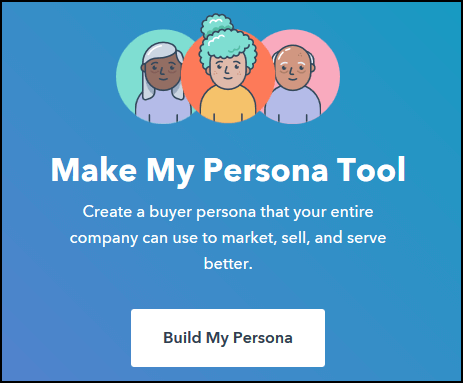
Start by filling out:
- Age range,
- Gender,
- Education level,
- Preferred Social Networks,
- Industry,
- Major industry blogs or influences,
- Best method of communication,
- Burning needs,
- Their goals or objectives
- Challenges they might face
And any other relevant aspect you want to include.
Getting this information will require you to interact with your audience. Check out relevant subreddits, social media interactions, forums, Facebook groups or any other online (or real life) gathering spot you can think of.
This might sound dull, but trust us, this is the foundation for a killer content marketing strategy, and skipping it would be a huge mistake.
Now let’s dive into the actual content marketing strategy.
Content Marketing Strategy
If you’ve done marketing or more specifically content marketing in SEO, there’s a very good chance you’ve heard about the “sales funnel”.
It’s thrown around a lot nowadays, sort of like a catchphrase.
But what is it, exactly? And what does it have to do with content marketing in SEO?
The sales funnel is a process that describes the phases your customers experience before converting. This conversion can mean anything: buying a product or service, subscribing to a YouTube channel or Newsletter or following your corporate Instagram account.
These phases are:
- Awareness
- Interest
- Action
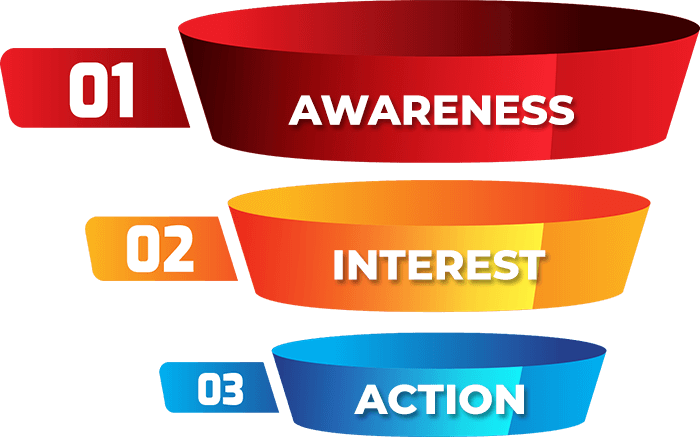
Your content marketing strategy must fully account for each of these phases. In fact, you’ll need to create easy to consume content that can satisfy users (and ease their transition) towards different stages of the cycle.
And while a top to bottom approach seems like the “obvious” functioning of a sales funnel, it’s rarely that simple. Your audience might skip the “awareness” phase and head straight to the “interest” stage of your content.
Depending on your line of work, your visitors can even go straight to the action phase of your content. For instance, plumbers and contractors are often contacted by people that need solutions ASAP.
That’s why it’s important to produce content that covers each of these phases.
Let’s take a closer look at each of these stages.
First phase: Awareness
You’ve no doubt heard of the phrase “learn to crawl before you walk”.
Well, it applies to this specific phase of the sales funnel. You don’t want to be pushy about conversions just yet, instead, you want to educate your audience. Offer value upfront.
Remember those burning needs, those problems your audience has?
This is your chance to create content that will help them fix those problems. Present your product as a solution to this problem in an elegant way.
Imagine, for instance, that a cleaning product manufacturer that teaches you how to properly sanitize your bathroom in a blog post, and simply recommend their product as the main disinfectant.
They’re teaching you the ins-and-outs of keeping your bathroom clean (that’s free knowledge right there) but they demonstrate this by using their products. Chances are that next time you consider cleaning your toilet you’ll instantly think of their product.
This specific phase of the funnel responds to the law of reciprocity and basic branding principles.
But don’t let this example limit you. There are way better ways of presenting this information.
Such as:
- YouTube videos/tutorials,
- Viral Infographic,
- Social Media Posts.
These are all valid information mediums. And if you have a pulse on your audience, you’ll know which of them works best for your audience

The awareness phase is critical to any business, and thankfully you’ll have no shortage of content to create.
If you take a closer look at content marketing in SEO, you’ll realize this is where we generate most of the traffic.
You create brand awareness and establish yourself as an authority, and some carefully placed Call To Actions will lead some of that traffic to your money pages.
The second phase: Interest

Once you’ve successfully hooked your audience with your awesome, informative content they’ll ponder what product or service best adapts to their needs.
Let’s say you’re offering catering services in your town.
A customer just read your “Top 5 Party Snacks Your Friends Want (But Won’t Admit!)” blog post that went viral.
He’s aware of your brand and wants to do business with you. But which service package should he get?
Is it your “Sushi for 20 guests” package? Or, would two 10-guest packages offer more diversity to their guests, and make for a better experience?
That’s what you want to answer next. A product comparison post might do just fine.
But what if your products and services require different approaches?
Maybe a case study post that fully explains the benefits a particular customer got from your awesome services could do. How about making a demo of one of your products? Maybe that could work even be better!

You can also create custom landing pages. If you follow our conversion optimization guide you’ll no doubt hook many potential customers before they’re done scrolling to the bottom of the page.
For many businesses, Email newsletter and e-books are their bread and butter. Customers that participate in an email list are clearly in the interest phase, and it’s only a matter of time before they convert.
Our advice?
Try different mediums. Some audiences would love to join an email list, while others would be swayed by a convincing case study. Just remember to measure your campaign’s results with Google Analytics.
Next, let’s talk about the last phase of the funnel: action
The Action Phase

You could say that people that are passionate about their work get most of their fulfillment out of the first two stages of the sales cycle.
But ultimately, money and/or goal fulfillment is what keeps most businesses running.
And this is where it all happens.
In this last phase, you’ll focus exclusively on having your audience convert, and one of the most common methods is through sales pages.
Sales pages are peak commercial content. Getting backlinks for these pages can be difficult, and most affiliate marketers choose to buy Private Blog Network backlinks. If you buy them from proven professionals, you’ll get fully customizable, high octane links that will put you on top of Google’s search engine result pages.
Social proofs, also known as customer testimonials are incredibly helpful as well. You can include them in your sales pages or make an entire section dedicated to them.

Customer testimonials are particularly powerful because you can use them as Call to Actions, case studies, etc. They’re a vital part of any marketing campaign and content marketing in SEO is no exception.
Other companies opt to showcase their products and drive direct sales through webinars. If you haven’t heard of them, they’re essentially guided PowerPoint or Prezi presentation with a voiceover.
Some of these are conducted live for a target audience (and they offer amazing interaction opportunities with your prospects), but most Webinars are easily automated and similar to a YouTube video.
You might also choose to send sales emails to your subscribers.
You’ll find that hard-selling a product to complete strangers might be an exceedingly difficult task, but your newsletter subscribers are clearly in the second phase of the sales cycle, and this could be the nudge that finally convinces them to convert.
Now that you got your content marketing strategy set up, let’s review the most popular types of content marketing out there.
Types of Content Marketing

Content marketing in SEO is as vast as its audiences, and new formats and mediums pop every now and then.
But they all have this in common:
- They create brand awareness for your business
- They earn backlinks, traffic, and social media exposure
- They help you build relationships
And most importantly:
They bring revenue to your business.
Let’s start with multimedia content marketing.
Multimedia Content Marketing

Multimedia content marketing is incredibly viral by nature. It includes your good old infographics, data charts, pictures, memes, screenshots, slideshows, diagrams, and others.
The right infographic or data chart can earn you social shares, traffic and of course precious backlinks.
There’s an old saying: “an image is worth a thousand words”
It’s as old as time, yet still relevant.
Think of a complicated idea or concept that your prospects need to know. Haven’t you ever wished you could just explain it with a picture, or with a simplified example?
Well, now’s your chance!
We’ve used visual concepts in the past, specifically when we explained the way Google crawls and indexes websites:

And the way TrustFlow can measure how good a backlink can be:

Explaining these things to a small business owner that wants to improve their rankings without hiring an SEO expert is much easier using pictures.
Data Charts or Graphs
Just like ideas and concepts, summarizing entire studies and statistics into a single chart helps users visualize their importance.
We’ve used this form of content marketing in the past.
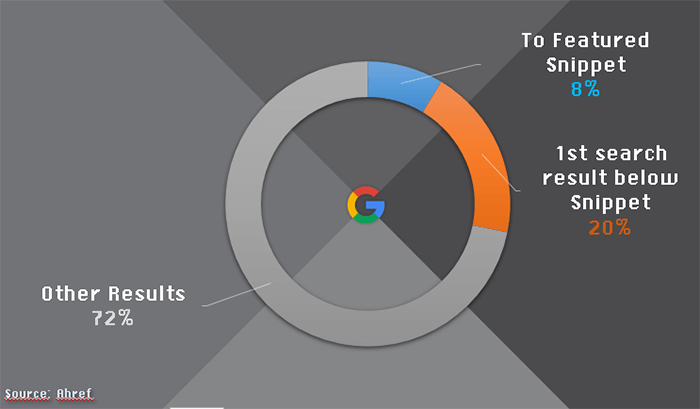
SERP Front Page Click Distribution
You could technically do this in PowerPoint, after all, they got some stylish presets you can use. But we recommend going the extra mile and doing something simple in Photoshop or Illustrator.
You’ll find that people would much rather use your unique data representations on their website.
Just make sure you reverse image search your unique graphs in case they forget to credit you!
Flowcharts
Flowcharts can easily represent entire processes and break them down step by step.

This tool can help your non-savvy audience understand complex situations or procedures your business deals with on a daily basis.
Because of this, they have the potential to go viral across platforms.
Next, let’s take a look at infographics.
Infographics
Infographics are still incredibly popular.
They can inform and educate audiences on important situations or breakthroughs in a matter of minutes.

They’re usually packed with pie charts, graphs and imagery that support a main idea or train of thought.
They can also introduce prospects to new strategies or approaches.
Remember our disinfectant business?
Let’s say that their article on bathroom cleaning did reasonably well, but not many subscribed to their email list.
What if they added a downloadable PDF infographic to everyone that subscribed to their newsletter?
Think about it:
Wouldn’t it be easier if you had the PDF open in your phone or tablet while you clean your bathroom, instead of a blog post?

It’d also be easier to share it via Whatsapp with that stinky friend that never cleans his toilet.
You’re effectively making your content easily shareable while building brand awareness and adding subscribers to your newsletter!
That’s content marketing done right!
Screenshots
We love screenshots. We use them all the time here at blackhatlinks.com
Whenever we review a particular SEO tool or teach how to use a third-party service we include screenshots.
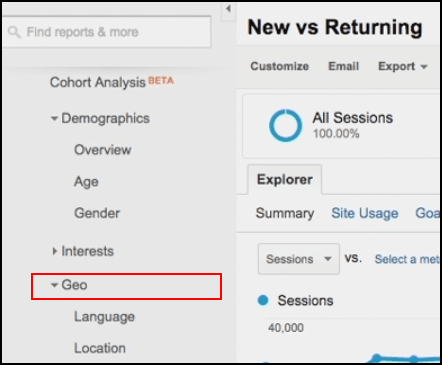
Why?
Because it makes everything so much easier. Reading steps out loud is clunky and boring.
Others love to take it to the next level and make .GIF images or YouTube videos.
Screenshots, however, are easier to reproduce: you can use Window’s snippet tool or Greenshot.
Memes and Cartoons
I know what you’re thinking:
“Memes? That sounds so unprofessional. Are you serious?”
We’re here to tell you it’s a brave new world out there. And you’d best keep up!
It started with major corporation Twitter accounts acting sassy and sending memes to their followers.
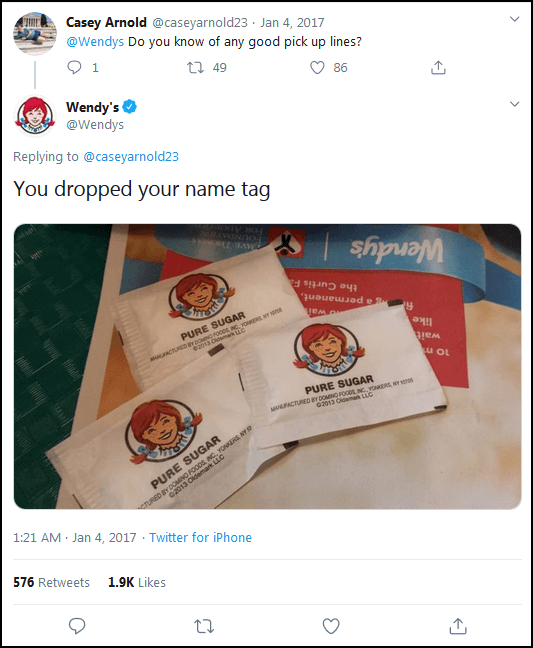
All sorts of businesses now share memes related to their industries or products over Facebook, Twitter, Instagram and even on their own blogs.
Why?
Because they’re humorous, viral and incredibly educational if you’re good at making memes. In fact, some of our favorite SEO blogs regularly use memes in their articles (which are packed with pro SEO advice)
There’re all sorts of websites that can help you create memes in minutes, but if you’d rather use comics, we recommend ordering simple vectors from proven freelancers at Fiverr.
Depending on your industry, memes might not be the best idea for your content marketing strategy. But sometimes being bold pays off in ways you’d never imagine.
If you feel like innovating in a safer environment, you’re going to love interactive content.
Interactive Content Marketing

Interactive content has been around for quite some time now, but it’s still a major content marketing technique.
It’s any type of content that your audience and manipulate or interact with, and it can be anything from an online quiz to an interactive map, an app or even an online calculator.
For instance, take a look at this online macronutrient calculator:

It’s incredibly convenient: you get an instant estimate of how many grams of proteins, carbohydrates, and fat you should consume every day.
It’s safe to say this is easily shareable content for anyone big into fitness!
If you’re in a similar line of business, you’d have to one-up this calculator by offering additional information to your audience, or maybe adding other functions (a free downloadable PDF report with the calculations made).
Having said that, you’ll notice three main requisites all interactive content must pass:
- It must have a very clear and obvious function
- It has to be simple to use
- It must be usable on all devices (smartphones, desktops & tablets)
- It must be fast to load
Interactive content must be simple to use. Avoid heavy scripts at all costs and Adobe Flash since it’s no longer supported.
If you need additional functions, you’re better off making a standalone app that your prospects can download. You’ll have to commission these types of projects to programmers.
A fine example of this would be Canva’s color palette generator.
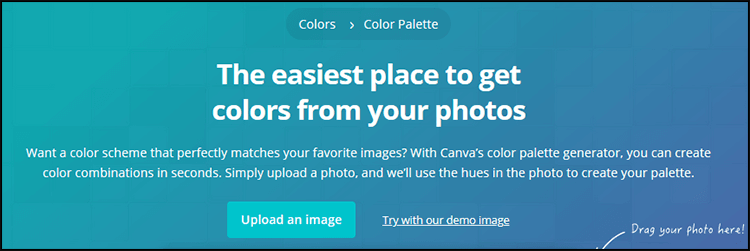
It’s something some of our editors love to use for design and illustration projects.
Plenty of tools are coded to work straight from a browser, similarly to AHREF. But again, these multifunctional tools are a different beast, so make sure your programmers have user experience as a high priority.
Other Forms of Interactive Content
Not all interactive content needs tons of development hours behind it.
Here are some of the easier options you can include in your content marketing strategy:
- Polls
- Short Quizzes
- Live Q&As (Questions & Answers)
- Tests
These are all forms of easy-to-create interactive content that perform extraordinarily well.
People love to input information and get answers immediately, sometimes even for the most whimsical things, such as finding out which Game of Throne character they are, based on their personality.
Still unconvinced?
Take a look at Buzzfeed quizzes:
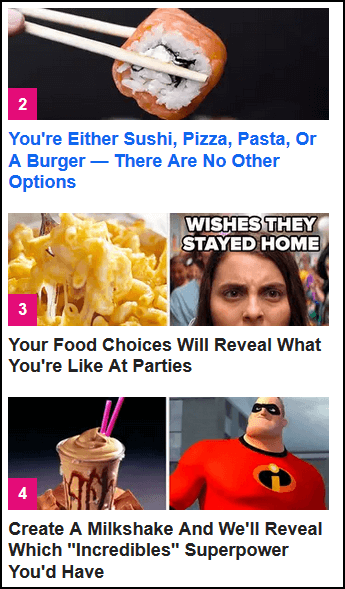
Love them or hate them, they bring traffic and engagement regularly.
Interactive material does so well in content marketing SEO because it boosts a metric known as session time, also known as “dwell time”.
People are likely to spend more time crunching the information on your calculator or online app, and Google’s RankBrain will interpret this as a positive sign of user engagement and experience.
This will skyrocket your position in the SERPs.
Let’s continue with social media promotion.
Content Marketing in Social Media

Admittedly, social media won’t net you consistent results like content marketing in SEO could.
But that’s no reason to avoid it.
Pinterest, Instagram, Twitter LinkedIn, and even Facebook are still viable content marketing promotion highways.
According to Backlinko, every major social media network favors newly posted content.
Which is no surprise, entire fads live and die in the span of an hour in social media.
The key takeaway is that posting on social media isn’t enough, it’s all about posting at the right time.
When it comes to measuring the “perfect” time to post, there are several studies on the subject.
Some business to business companies swear by Tuesdays after 8 AM are prime user interaction hours. Others have measured peak engagement on Thursdays at 11 AM.
When it comes to Business to Client companies, Sunday mornings report the best engagement metrics across social media platforms.
The cold and hard truth?
You’re going to have to test, and then test some more until you come up with a clear answer. Once you do, make sure you add that to your internal audience profile datasheet!
![]()
Now remember:
The idea is to get people to visit your website and fulfill your business’ goals.
And all of the popular social media platforms share one goal:
Keeping users on their platform.
So how can you “outsmart” them? How can you convince people to click on your links and visit your website?
You need to make your social media content marketing efforts look incredibly enticing.
A good start would be to offer some value upfront. Give them a taste of what they’ll find if they follow your link.
How can you do this?
Let us show you an example. Check out this Tweet:
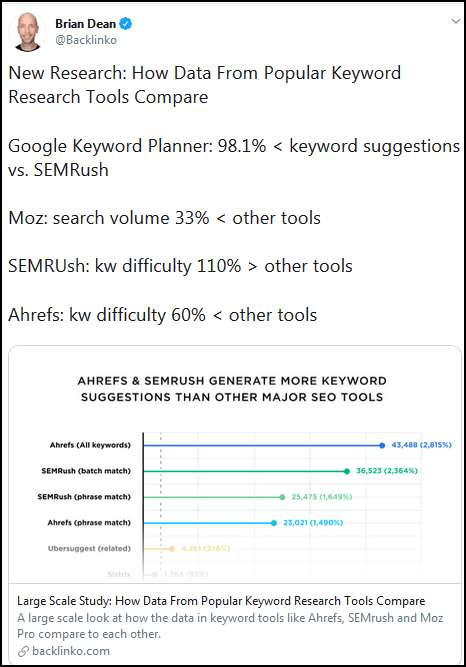
- It delivers clear context on what your piece of content is about
- There’s interesting, shareable data right upfront
- The piece of content has a featured image with bright colors.
Facebook and LinkedIn character limitations allow you to go a step beyond.
You can easily stick your content’s introduction paragraph and make it extra click-baity.
Don’t get us wrong: we’re not telling you to lie about what your audience will get once they visit your website.
That’s going to negatively affect your bounce rate and SEO.
Instead, we’re recommending you “sell” your article’s main benefit in your introduction.
In other words, make a bold promise and deliver on it!
Once you’re done introducing your content, please remember that different social media platforms require different approaches.
For instance, Twitter features a truckload of bite-sized information that often gets mixed with the rest of the noise. Scrolling past automated and outdated blog post tweets is sadly all too common.
So, switch it up!
Add exciting tags to your Tweet’s first line of text. Such as [Updated for 2020!] or, [Practical Guide]. Maybe even add an estimated reading time [3-Minute Read!].
Facebook posts on the other hand call for a more “personal” tone. You have an audience that grows with you as part of a community. Don’t be afraid to break barriers (respectfully, of course!).
Instagram is all about catching your audience’s attention, and trust us, you’re in for some serious competition. Save your best and brightest photos or vectors for these posts. Keep it short and sweet!
You’ll also need to use the right hashtag. Luckily, we got an amazing tool for you.
Using the Right Hashtag
Most social media marketers use Hashtagify and Google Trends.
Google Trends is amazing for picking up trends ahead of time, and we’ll talk more about it on our content marketing tools section.
For now, let’s focus on Hashtagify.
Hashtagify is an online tool that recommends active, trendy hashtags that are related to your seed hashtag.

A seed hashtag is a broad term, similar to a seed keyword.
For example, you could search for “sushi”.
The tool will show metrics related to your seed hashtag and recommend similar ones you could use.
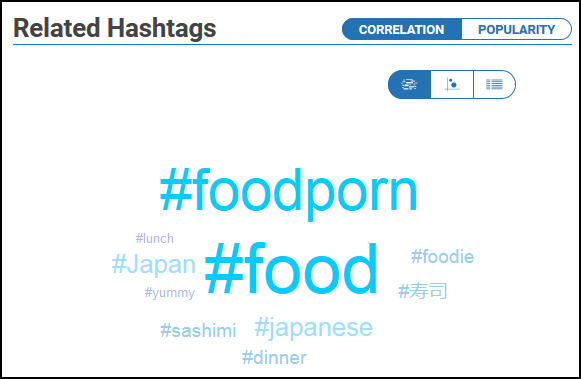
Some of the suggestions might even help you come up with new keyword ideas for your content marketing to gain a unique insight into your audience and their interests.
Influencer Outreach
This is a particularly good tip if your follower count is low.
By now, you should have listed known influencers in your industry under your audience profile card.
It’s time you get in touch with them.
You could try reaching out via the social media private message function, but we recommend writing a personalized e-mail.
Keep in mind several influencers will charge you for spreading the word.
We recommend that you thoroughly examine their engagement metrics before going into business with them.
Influencer marketing can be very profitable when done right. But sadly, it’s not without its pitfalls.
Follower counts bloated by bots, posts with little to no engagement or targeting the wrong audience can make your investment obsolete.
Content Marketing With Podcasts

Podcasts are huge right now. And if your business has a primarily US-based audience, then you need to jump on this trend right now.
Podcasts are downloadable (or streamable) audio content released as weekly (or daily) episodes for audiences.
And let us tell you: if there’s a niche, there’s most likely a podcast that covers it.
How does content marketing play into this exploding trend?
Mainly in four very different, but effective ways:
Topic Research
Podcasts are a topic research goldmine. Any SEO worth their salt will do competitive analysis before starting any SEO campaign.
But not many are willing to sift through (potentially) hours of audio to pinpoint hot topics that their target audience finds compelling.
Let’s move on to podcasts appearances
Appearing as a Guest on a Podcast

SEO is all about extending a business’ reach beyond its wildest dream through traditional search engine optimization strategies.
But Podcasts can also potentially be game-changing sources of traffic and conversions, and SEO experts are taking notice.
Podcast producers and owners alike constantly look for new content, and if you have something their audience might find worthy of their time and money, they’ll most likely love to have you over.
You both settle on a topic, offer value and that’s it!
Mind you, they’re not booking you for an Ad space (at least not directly). They’re inviting you because you have something to offer. Be natural! And subtly plug your services.
We recommend presenting your services as solutions: Turn your case studies into stories, share your knowledge, and you’ll make new connections and earn new customers.
Additionally, if the Podcast has its own website, there’s an excellent opportunity to earn a backlink on top of everything else.
Advertising on Podcasts

According to Hackernoon, podcast advertising costs around $0.01 per active user per hour. That’s super cheap if you compare it to the radio ($0.11) or the Internet ($0.24)
Your knowledge of PPC campaigns will translate extremely well to Podcast advertising too. Just make sure you get trustworthy metrics from the Podcasts you’re looking to advertise in.
Starting Your Own Podcast
So, you’ve done your research, and it turns out your competitor’s Podcasts have an audience.
But you’re confident you could do so much better.
Then we highly recommend you give them a run for their money!

Having your Podcast will open networking opportunities, income opportunities and of course establish a community within your niche or industry.
If you’ve done your research as we recommended before, finding a topic that resonates with your audience should be simple enough.
Once you’ve covered your topic and name, choose what kind of format would work with you.
If you’re running all aspects of your business, becoming a single host and having guests over could work.
We’ve also seen incredibly successful Podcasts that work with a Multi-host format, meaning two hosts interview guests and offer new takes on topics the audience has shown great interest in.
Fair warning though: running a Podcast is by no means a simple task. It comes with a significant time and money investment. Make sure that the goals and projections match them before embarking into something that could turn into a monster endeavor.
Regardless of the content marketing medium, you consider best for your audience, you’ll need to find content ideas by the scores.
Here’s what we recommend you do.
How to Come Up With New Content Ideas

Any content marketing strategy will need an “idea bank“.
Fortunately building this idea bank doesn’t have to be super time-intensive activity.
And if you follow our tips and tricks, you’ll have content planned for months ahead.
Let’s start with a massively underrated tool: Google Trends
Content Marketing in SEO: Google Trends
Google trends comes with a nifty feature called “Related Queries”.
It works very similarly to Google’s search engine related queries.
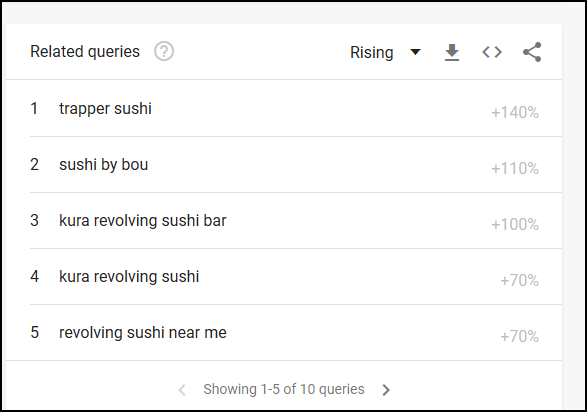
All you have to do is take some of these queries and run them through the tool.
You can find some seriously good keywords and content ideas all in one. You might even find out seasonal patterns that will shape your content marketing in SEO.
For instance, if a particular product’s demand increases during summer, you could either:
- Write the article and publish it weeks ahead of summer, to maximize its exposure
- Have the article pre-written and published months ahead, and simply update and promote its content two weeks before it fully trends
If you’ve already built a considerable following, the first approach will likely net you the best results, since content promotion efforts won’t be as intensive.
If your website is fairly new, then writing the content ahead of schedule and updating it a couple of weeks before it peaks trend-wise might give you better results.
This is because according to AHREF content tends to “fully mature” in eight months. Giving Google a chance to warm up to your content and focusing heavily on promotion a few weeks ahead might be the right move for a domain with lower authority and following.
Just keep in mind that the fastest way to rank for a larger number of keywords in a matter of days is through domain authority building. You’ll need tons of backlinks to accomplish this.
We at blackhatlinks.com consistently deliver safe, potent private blog network links ranging from TrustFlow 15 to 40. We’ve serviced over 24,200 satisfied customers and more than 240,000 orders.
When you’ve been in the industry for more than 9 years and figured the ins-and-outs of what a high-value backlink looks like, it all comes down to investing in a massive infrastructure that can service most industries.
With over 59 niches and 9 industries, our massive network can provide results for you in record time, and help you reach the success you deserve.
Pumping backlinks to new content is a surefire way to support your content marketing in SEO. But if you still need more content ideas, we got you covered.
Let’s talk about Answer the Public!
Content Marketing in SEO: ATP
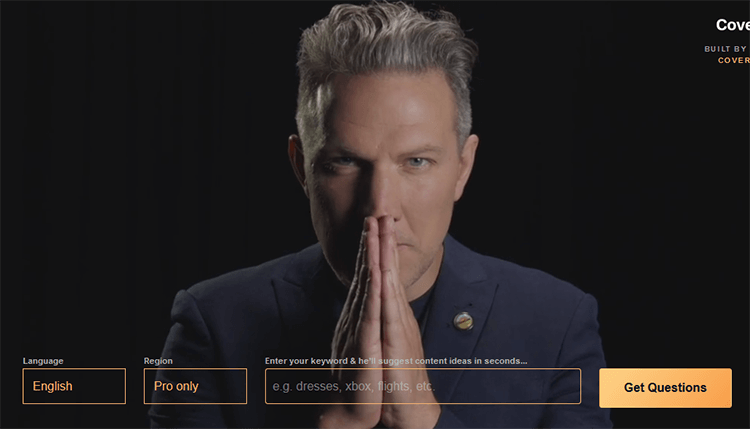
Answer The Public can be used as a keyword tool, but we’ve found it’s an excellent source of content marketing topics.
Use your business’ seed keyword (roofing, diet pills, iPhone case, etc.) and you’ll get a massive list of questions and topics you could tackle for years to come.
Blogs and YouTube Channel Comments
This is a fairly obvious one.
Writing about the topics your competitors are already targeting using the Skyscraper technique is obvious enough.
But what about searching through their blog and YouTube video comments?
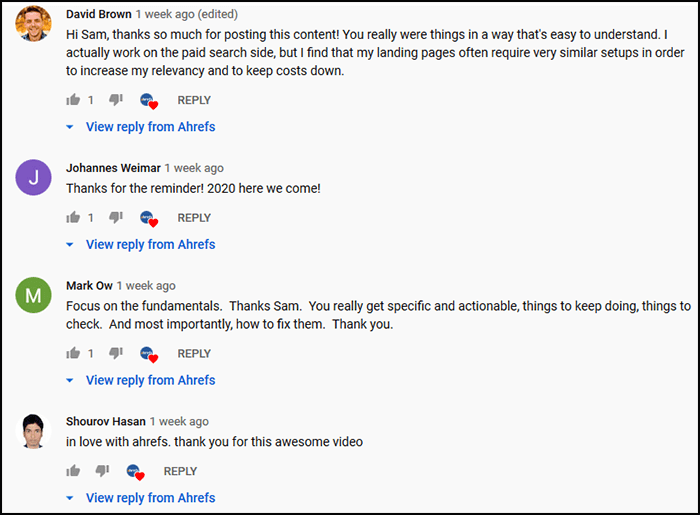
Blog and YouTube comments often have questions that the author didn’t cover (giving you the chance to one-up the best content on a given topic), and other times they’ll have topic requests.
Some of these might be fairly advanced questions (technical wise). Sometimes they’re incredibly specific and serve a small audience.
A quick keyword research on these topics will tell you if they’re worth pursuing. But you’re pretty much guaranteed to have some unique content on your website right off the bat!
If you’re looking for content ideas that already attract your prospects by droves, you’ll love the next tool.
Content Marketing in SEO: Buzzsumo
When it comes to content marketing in SEO, a good rule of thumb is to expand on what your competitors are already writing about.
Buzzsumo does this research for you and ranks these topics in terms of engagement.

This ensures that you’re dedicating time and effort into content that is likely to go viral and get much-needed engagement.
You can rank these articles by the number of social shares or by the number of backlinks they’ve accumulated over time.
A 10-minute search is likely to net you a laundry list of articles you can weave into your content marketing strategy and goals.
Closing Words
Our final advice is simple enough: before you begin reaching into your idea bank, make sure that you’ve selected a proper content marketing medium for your audience.
When it comes to content marketing in SEO, a blog is the perfect starting point.
But don’t support your blog with content your audience won’t consume. If you’re launching a fairly technical online APP, shiny Instagram photos and publications probably won’t do much for you.
However, a content marketing strategy that includes LinkedIn posts and practical YouTube videos showing your app’s potential will likely yield amazing results.
Invest time into knowing your audience, and we guarantee you’ll nail this.
As always, thanks for reading this guide!



